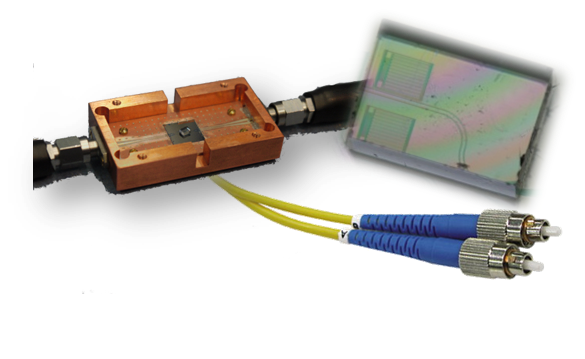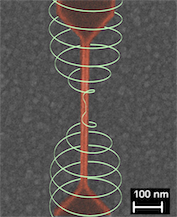Working Group Superconducting Quantum Circuits
|
Hybrid Quantum Systems
Future quantum networks will interconnect many quantum systems of diverse physical nature. Photons are ideal carriers of quantum information over long distances because they can be efficiently send through low loss optical fibers. On the other hand, fast and hybrid scalable quantum gates can be implemented in solid-state system, e.g. architectures involving superconducting circuits. Thus, interfacing photonic and solid-state qubits withing a hybrid quantum architecture offers a promising route towards large scale distributed quantum computing. Ensembles of optically active spins are promising candidates for realizing such a quantum media converter. Among these, spin ensembles consisting of rare earth (RE) erbium Er3+ ions doped into a Y2SiO5 crystal matrix play a special role due to the 1.54 μm optical transition of Er3+, which exactly matches the low loss Telecom C-band of optical fiber communication.
|
| Selected Publications: |
| (1) S. Probst et al., Phys. Rev. Lett. 110 (2013) 157001 |
| (2) P. Bushev et al., Phys. Rev. B 84 (2011) 60501 |
Quantum Phase Slip Phenomena in Superconducting Nanowires
In thin superconducting filaments, quantum fluctuations of the order parameter lead to very unusual physical properties. For instance, due to the quantum fluctuations, a superconducting wire can undergo a phase transition to an electrically insulating state.
We perform experiments on this unusual wires at low temperature and probe the quantum phase slip phenomena by very low power scattering of coherent microwave photons. Due to their intrinsic non-linearity, quantum phase slip wires also offer the possibility to be included into superconducting circuits to create artificial two-level systems, commonly known as qubits.
|


